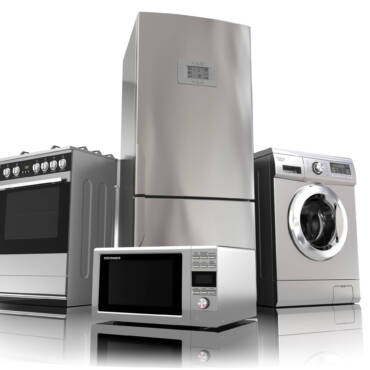The U.S. power grid is facing a critical situation with increasing pressure from multiple fronts, spotlighting today’s Generac for 3000 sq ft house. The rise of data centers, coupled with more severe weather events, is pushing the grid to its limits.
This has resulted in a surge of power outages, impacting homeowners, businesses, and institutions alike. A staggering 1.2 billion hours of power were lost in the United States during the first nine months of 2024 alone. As these outages become more frequent, the demand for residential backup power solutions will continue growing.
While efforts are underway to add more renewable energy sources like solar and wind power to the grid, their intermittent nature poses a challenge. Additionally, the increasing demand for power-hungry technologies like artificial intelligence and electric vehicles adds to the strain.
The severity of the situation is underscored by this year’s hurricane season, which has already witnessed devastating storms like Hurricane Helene and Hurricane Milton. They represented some of the most powerful hurricanes and storms to hit the Florida region in a century, causing hundreds of billions of dollars in damages.
Adding to these challenges are the predicted weather patterns for the remainder of the year. Warmer-than-average temperatures, from the southern states to New England, will likely increase energy consumption for air conditioning, further stressing the grid. This confluence of factors highlights the urgent need for comprehensive strategies and investments to enhance grid resilience, expand capacity, and ensure a reliable power supply in the face of mounting challenges.
“A slowly-developing La Nina is favored to influence conditions for the upcoming winter across most of the country,” according to the National Oceanic and Atmospheric Administration’s latest U.S. Winter Outlook. “This winter, NOAA predicts wetter-than-average conditions for the entire northern tier of the continental U.S.”
Right-Sizing Your Generac for 3000 Sq Ft House
Choosing the right-size Generac for 3000 sq ft house option is a crucial decision requiring careful consideration of your power needs during an outage. While square footage provides a general starting point, the actual generator size depends on your appliances and systems you want to keep running.
Begin by identifying the essential appliances and systems you can’t live without during a power outage. This typically includes your HVAC system, refrigerator and freezer, lighting, and possibly a water heater if it’s electric. A well pump is essential to keep powered, and a sump pump too.
Don’t forget about kitchen appliances like a microwave or coffee maker, as well as electronics like computers and internet routers. Consider medical equipment too.
You also need to determine wattage requirements. Check the manufacturer labels or user manuals, or use general estimates:
- Air conditioners: 3,000 – 5,000 watts.
- Refrigerators: 600 – 800 watts.
- Freezers: 400 – 600 watts.
- Microwaves: 1,000 – 1,500 watts.
- Ovens: 2,000 – 5,000 watts.
- Well pumps: 700 – 1,500 watts.
- Electric water heaters: 3,000 – 4,500 watts.
- Sump pumps: 500 – 1,200 watts.
- Lights: 500 – 1,500 watts.
It’s important to account for “starting wattage,” which is the extra power surge required to start appliances with motors. This is often listed as “peak watts” or “surge watts” on the appliance label.
Remember that home backup generators have two wattage ratings: running watts and peak watts. Add your wattage by also including the starting wattage figures, or peak watts, as well as a combined safety margin of at least 20 percent.
Small homes from 1,000 – 2,000 square feet typically need 5,000 – 10,000 watts, or 5 to 10 kilowatts. Medium and large homes from 2,000 – 5,000 square feet usually need 8,000 – 22,000 watts, or 8 to 22 Kw.
Considering the Price of Electricity Where You Live
Understanding the local price of electricity and how it relates to your Generac for 3000 sq ft house is essential for managing any household budget. While energy costs have historically trended upward, there’s some good news: renewable energy sources are moderating many increases.
However, electricity remains a significant expense, and downtime from power outages is also costly. The average American household faces varying costs depending on their location and energy consumption habits. Interestingly, the United States exhibits a wide range of electricity prices and consumption patterns.
Louisiana boasts the lowest average energy rate prices. Yet, Maine residents consume the least amount of electricity. Despite having the lowest average energy rate at 9.8 cents per kilowatt hour, Louisiana’s warm climate leads to higher consumption, resulting in an average monthly bill of $120, or 1,232-kilowatt hours per month consumed.
Conversely, Mainers use the least electricity at 562 kilowatt hours per month. But at 17.9 cents per kilowatt hour, Main residents’ higher energy rate still results in an average monthly bill of $100.
To better understand how electricity costs relate to home size, you can calculate the average cost per square foot. Simply divide your monthly electric bill by your home’s square footage. This lets you compare your expenses to statewide averages.
“Utilities will be far pricier in places with a high cost of living,” states U.S. News and World Report. “According to November 2023 data from the U.S. Energy Information Administration, the national average residential price of electricity in 2022 was 12.36 cents per kilowatt.”
It adds: “North Dakota and Wyoming currently have the cheapest electricity costs. Hawaii, California, and a handful of states in the northeast have the most expensive fees.”
Several factors influence your electricity bill, especially if your water heater, space heating, and stove are all electric.
Preparedness and Generac for 3000 Sq Ft House Awareness
The increasing frequency and severity of power outages in the United States underscore the critical importance of national preparedness and a Generac for 3000 sq ft house, especially as we head into the winter months. A record-breaking 1.2 billion hours of power loss were experienced in the first nine months of this year alone, and this trend is expected to worsen with the added strain of winter weather on the nation’s electrical grids.
Winter power outages pose unique dangers because of freezing temperatures and potential disruptions to heating systems. It’s crucial for homeowners to have a comprehensive emergency plan in place.
Resources like Generac’s Cold Weather Preparedness Guide and Winter Storm Readiness Site offer checklists to help homeowners understand the risks of potential blackouts. Preparing for a winter power outage involves several steps. Locating nearby warming centers and understanding their hours of operation and pet policies is important.
Building an emergency kit with supplies is also key. Having important contact information readily available and establishing a communication plan with family members is a good idea too.
To optimize safety during an outage, install carbon monoxide alarms on each level of your home and outside sleeping areas. Remember to test these alarms monthly and replace batteries as needed.
Our nation experienced several weather events this year, each causing costly damage. These include severe storms, wildfires, and winter storms. They not only result in property damage but also disrupt power grids, leaving many homeowners without electricity.
Each year, National Preparedness Month serves as a vital reminder to proactively plan for emergencies rather than reacting when they occur. Taking steps to prepare can significantly impact the wellbeing of your family during and after a storm. Prioritizing preparedness means identifying the most suitable backup power solution and familiarizing yourself with its safe operation.
The 22 Kw Home Backup Generator Difference
While it might be tempting to opt for a partial house generator to save on costs, a Generac for 3000 sq ft house, like the Generac 22-kilowatt model, offers unparalleled security and convenience by powering every circuit in your home. You can rest assured knowing all your appliances and systems will remain operational, regardless of the severity or duration of the power disruption.
A home backup generator connects to your home’s main electrical panel via a transfer switch, which seamlessly switches the power source from the grid to the generator during an outage. A Generac 22 Kw whole-house generator is typically sufficient for larger homes, providing ample power. This model boasts several features that make it reliable, including:
- Efficient and eco-friendly engines. These generators run on natural gas or propane, minimizing their environmental impact.
- Patented sound-attenuating technology. This ensures quiet operation, minimizing noise pollution.
- Remote monitoring and control. You can conveniently monitor and control the generator from your mobile device.
While the upfront cost of a generator might seem significant, the long-term value it provides in terms of peace of mind, security, and convenience far outweighs the initial investment. It can reliably power the essential needs of a 3,000 – 4,000 square foot home, including lighting, outlets, and even a good-sized air conditioner.
Beyond peace of mind, a whole house generator sitting on a pad outside your home offers enhanced safety compared to a portable generator. Portable generators pose a risk of carbon monoxide poisoning if misused. While newer models incorporate safety features like auto-shutoff triggered by high carbon monoxide levels, they still require careful operation and monitoring.
Find the right dealership and experts to help you assess and optimize your needs so you get the most out of your investment, as well as determine the correct generator size.
Danley 911 Home Services Electrical
At Danley 911 Home Services Electrical, we help you execute the process from beginning to end when it comes to your Generac for 3000 sq ft house. We prepare you for your installation, as well as obtaining permits, inspections, and assisting with repair and maintenance. We also help you optimize and fine-tune your situation to determine the correct generator size.
Get the most out of your investment. Contact us today.


